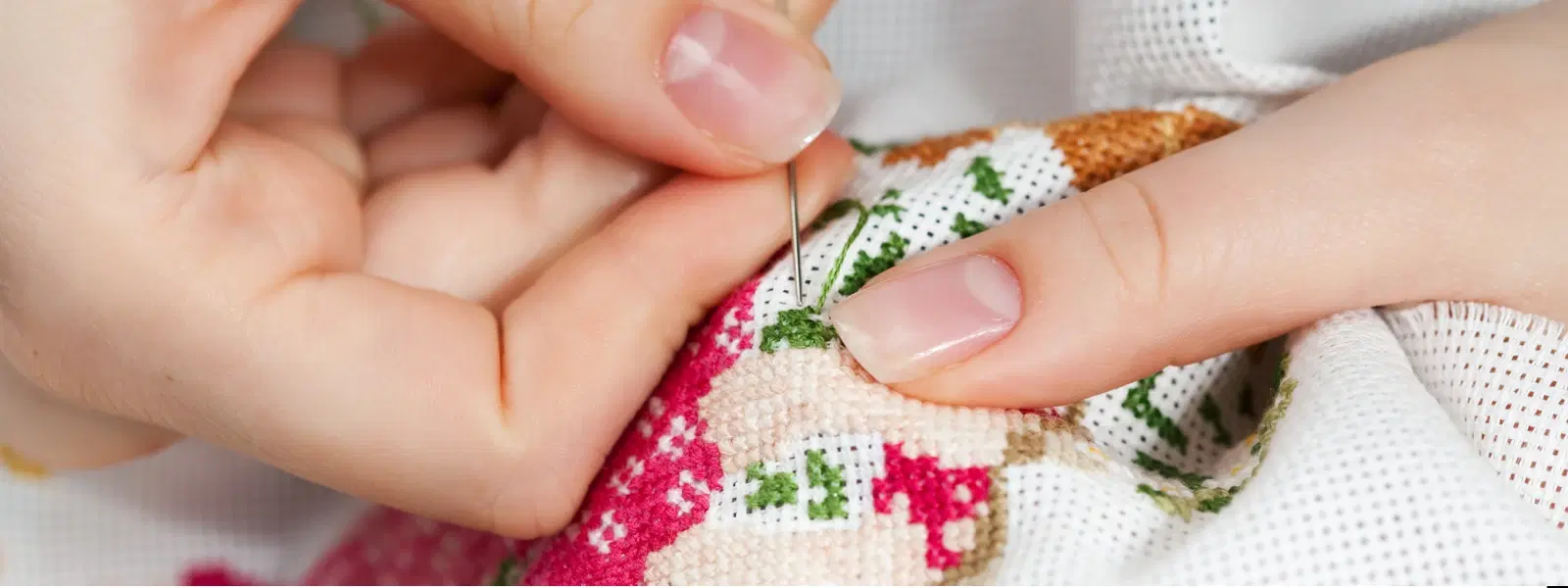
Hotels
•03 min read

The Chamba Rumal, with its lavish embroidery and delicate motifs, stands as a testament to the rich cultural heritage of Himachal Pradesh. This traditional Indian art form preserves age-old techniques passed down through generations. In this blog, we explore frequently asked questions about the Chamba Rumal, providing insights into its origins, craftsmanship, cultural significance, and modern relevance in the world of Indian handicrafts.
Chamba Rumal embroidery traces its origins to royal patronage in the picturesque hills of Himachal Pradesh. Historically, the art form evolved alongside miniature painting traditions and the famed Pahari school of art. The intricate designs and refined techniques were greatly enhanced under the guidance of rulers like Raja Umed Singh, whose support helped elevate this form of heritage embroidery to a celebrated cultural symbol.
This embroidery is more than just a decorative textile; it is a vibrant cultural artifact that embodies the folk art of Himachal. Traditionally, Chamba Rumals were used in religious ceremonies and showcased mythological themes, connecting the art to ancient stories and legends. Today, it remains a significant symbol of traditional Indian art and a proud representation of Himachal’s artistic legacy.
At the heart of Chamba Rumal embroidery lies an intricate double-sided technique known as the dorukha stitch. Artisans painstakingly work with fine silk threads that lend life to vibrant colors and detailed motifs. This reversible technique ensures that both sides of the fabric are equally adorned, a unique feature that has helped the art form earn a distinguished place among Indian handicrafts.
The designs found in Chamba Rumal often depict scenes from iconic Indian epics like the Mahabharata and Ramayana, enriched with floral patterns and geometric designs. Each motif reflects the cultural art forms of Himachal Pradesh, telling stories of valor, love, and divine legends. These delicate compositions not only capture the essence of traditional lore but also add a layer of depth and beauty to every piece.

The creation of a Chamba Rumal is an art mastered by skilled artisans, predominantly women, who have honed their craft through years of practice and heritage learning. These dedicated craftspeople work meticulously, often using techniques passed on from generation to generation. Their expertise underpins the name of Chamba hand embroidery, making each piece a true piece of traditional Indian art.
In recent years, there has been a renewed effort to revive this dying art form. Numerous exhibitions, workshops, and collaborative projects with contemporary designers have been organized to promote Chamba Rumal embroidery. These initiatives not only celebrate its rich legacy but also ensure the sustainability of this handcrafted textile art in modern times. Through such initiatives, traditional techniques are being rediscovered and adapted to suit today’s aesthetics while maintaining their cultural roots.
Today, Chamba Rumal embroidery is making a significant mark in global markets as a genuinely unique Indian handicraft. Its detailed and reversible designs have found a place in contemporary fashion, stylish home décor, and vibrant cultural showcases. This heritage embroidery has evolved from the traditional realms of religious and royal patronage to become a sought-after art form in modern design circles, bridging the gap between the past and the present.
For collectors and art enthusiasts alike, authentic Chamba Rumals are available both online and at various cultural exhibitions throughout India. When exploring these treasures, it is important to look for certifications and detailed descriptions that ensure authenticity. Although the pricing can vary based on intricacy and size, these pieces remain a valuable investment in preserving India’s rich heritage in handcrafted textiles.
Did you know? The Chamba Rumal is one of the few embroidery styles in the world that is completely reversible, showcasing identical designs on both sides. This technique, known as dorukha, is a testament to the artisan's meticulous skill and precision.

Chamba Rumal embroidery is a traditional art form from Himachal Pradesh that combines intricate needlework with themes inspired by miniature paintings and mythological stories.
Himachal art forms include a variety of cultural expressions such as Chamba Rumal embroidery, Pahari miniature paintings, and other handicrafts that reflect the region's rich heritage.
Chamba Rumals are typically handcrafted by skilled artisans, often women, who inherit techniques passed down through generations.
In fine arts, Chamba refers to the region in Himachal Pradesh known for its contribution to embroidery, miniature paintings, and other traditional crafts.
Common motifs include mythological scenes, floral patterns, and geometric designs inspired by epics such as the Mahabharata and Ramayana.
Chamba Rumal embroidery is not only a traditional Indian art form but also a dynamic symbol of Himachal Pradesh’s rich cultural tapestry. Its origins in royal patronage, intricate craftsmanship, and mesmerizing motifs provide a window into the regional history and artistic excellence of the area. Modern revival efforts and global recognition have further underscored its timeless appeal and relevance in contemporary art. This exploration of Chamba Rumal invites readers to appreciate the remarkable artistry behind handcrafted textiles and celebrate the enduring legacy of Indian handicrafts.